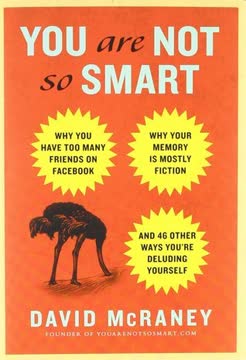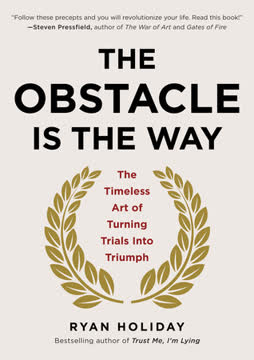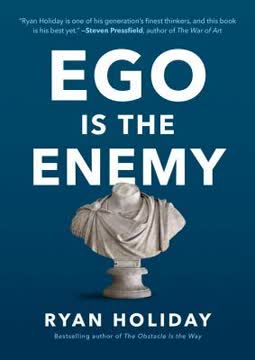Key Takeaways
1. Control Your Thinking: Flip Autopilot & Choose Your Mindset
We can choose how we think.
Escape autopilot. In our busy lives, we often operate on autopilot, relying on mental shortcuts and familiar habits. While useful for routine tasks, this automatic thinking can cause us to miss opportunities, fall into traps, and prevent us from performing at our best. Recognizing when you're on autopilot is the first step to taking control.
Four states of mind. Our mind exists in four states: Autopilot (unconscious habits), Critical (negative self-talk), Thinking (conscious analysis), and Engaged (absorbed, in the zone). The goal is to minimize time in Autopilot and Critical states, and strategically move between Thinking (internal focus for planning/reflection) and Engaged (external focus for action/presence) states.
- Autopilot: Familiarity trap, single view, pressure.
- Critical: Inner voice monitoring/judging actions.
- Thinking: Analyzing options, solving problems, reflecting.
- Engaged: Absorbed in the present task, peak performance.
Switch back to manual. To move from harmful states (Autopilot, Critical) to helpful ones (Thinking, Engaged), actively look for novelty, challenge assumptions (like "always"), accept other perspectives, bring objectivity to self-talk, build reflection time, focus on vital components, prioritize process over outcome, and balance challenge with skill. You have the power to choose your mental state.
2. Embrace Attentive Optimism: See the World Differently
Adopting the way of thinking outlined in the pages that follow will mean that, along with numerous other benefits, you achieve more, live longer, are better liked, and have better relationships.
Optimists explain differently. Optimists and pessimists interpret events using different explanatory styles, particularly regarding scope (specific vs. universal) and time span (temporary vs. permanent). Optimists view positive events as universal and permanent ("I'm always good at this") and negative events as specific and temporary ("That was a one-off mistake"). Pessimists do the opposite.
Benefits outweigh realism. While pessimists (often calling themselves "realists") may be more accurate in predicting negative outcomes, optimists tend to achieve more because they are more persistent and resilient. Research shows optimists live longer, are healthier, and have better relationships. The key is "attentive optimism," which involves taking appropriate credit for success and learning from failures, avoiding unrealistic wishful thinking or ignoring problems.
Argue with yourself. To shift towards attentive optimism, challenge your pessimistic beliefs using a six-step disputation process:
- Identify your pessimistic belief.
- Gather evidence against it.
- Find alternative explanations.
- Assess the real consequences if the belief is true ("So what?").
- Evaluate the usefulness of holding the belief.
- Create a call to action based on your new perspective.
3. Take Charge: Focus on What You Can Control
The ability to distinguish and act on what is in or out of your control makes the difference between those who can banish the worry monsters and those who can’t.
Reactive vs. proactive. People with a reactive mind-set focus on what is outside their control (the market, other people's actions, fate), leading to feelings of powerlessness, worry, blame, and inaction. People with a proactive mind-set focus on what they can control (their own actions, responses, and efforts), leading to feelings of control, effective action, and better outcomes.
Internal locus of control. This concept, known as having an internal locus of control, means believing that events are primarily caused by your own behavior and capability, rather than external forces like luck or fate. Research links an internal locus of control to:
- Greater job performance and satisfaction
- Decreased depression and anxiety
- Healthier relationships
- Higher academic achievement
- Longer life expectancy
Always something you can do. Even in seemingly overwhelming situations, there are always actions you can take to influence the outcome or your experience of it. Focusing your energy on these controllable actions, no matter how small their immediate impact, is the hallmark of a proactive mind-set and leads to feeling more in charge of your life.
4. Make Conscious Choices: Cross Your Rubicons
The choice we all have is between will and won’t, instead of can and can’t.
"Can't" disguises "won't". We often use "can't" as an excuse, when in reality, we are choosing "won't". Recognizing this distinction highlights our freedom and responsibility for our actions and future. Our lives are often governed by self-imposed or socially constructed rules and fears that limit our choices.
The existential cycle. Life's big decisions involve moving through four stages: Doing (current state), Contemplating (imagining alternatives), Preparing (investigating options), and Experimenting (making the change). The challenge is overcoming the "doing magnet" – internal conversations that pull us back to the status quo.
- "Dreamers are losers": Stops contemplation.
- "Get real": Stops preparation.
- "Catastrophic fantasies": Stops experimenting (crossing the Rubicon).
Cross the Rubicon wisely. Moving from preparing to experimenting is crossing the Rubicon – taking an irrevocable step. Fear of failure often manifests as catastrophic fantasies, preventing us from taking risks. Evaluate if your decision not to cross is based on rational concerns (considered arguments, no regret, worst-case acceptable, would advise others, feel relieved) or irrational fears (extreme fantasies, nervousness, potential regret, contradicts self-image, still excited). Irrational exuberance (crossing too easily) also requires caution; spend more time preparing.
5. End Procrastination: Understand Your Excuses & Take Action
The good news is that procrastination, rather than being a characteristic you are born with, is actually more of a bad habit you pick up over years.
Procrastination is a habit. Putting things off is a learned behavior, not an inherent trait. Like any habit, it can be unlearned. Procrastination accumulates "time debts" that become more painful to pay off later, impacting productivity, relationships, and well-being.
Five reasons for delaying. We procrastinate for specific reasons, often unconsciously:
- Complacency: Believing a task is easy and can be done anytime.
- Avoiding Discomfort: Dreading the unpleasantness of the task itself.
- Fear of Failure: Worrying about not doing the task properly or failing.
- Emotional Barriers: Using current feelings (stressed, tired) as an excuse.
- Action Illusion: Staying busy with unrelated tasks to feel productive without doing the necessary work.
Break the habit. Identify your primary reasons for procrastinating in different situations using self-assessment. Then, apply targeted tactics:
- For Complacency: Imagine future rewards/penalties, set challenging goals.
- For Avoiding Discomfort: Break tasks into small steps, add enjoyable elements ("spoonful of sugar").
- For Fear of Failure: Confront fears by assessing real risks/rewards, focus on learning from mistakes.
- For Emotional Barriers: Imagine the negative outcome of not acting, act despite your mood.
- For Action Illusion: Define successful outcomes, prioritize the first necessary step.
General tactics like the "Five-Minute Start," setting goals/rewards, imagining "You Today vs. You Tomorrow," creative punishments, and witnessing accountability can also help overcome procrastination.
6. Master Relationship Mindsets: I'm Okay, You're Okay
A healthy mind-set is likely to lead to positive, enduring relationships at both work and home.
Mindset shapes relationships. Your relationship mind-set, formed early in life, is the set of thoughts and attitudes determining how you approach and respond to others. It influences how you see yourself ("I'm okay") and how you see others ("You're okay"). Understanding your typical mindset is crucial for improving connections.
The I'm Okay, You're Okay matrix. Combining these two factors creates four relationship mind-sets:
- I'm Okay, You're Okay: Healthy, trusting, open, logical, empathetic. Best for positive relationships.
- I'm Okay, You're Not Okay: Superior, critical, dismissive, argumentative. Leads to isolation.
- I'm Not Okay, You're Okay: Self-deprecating, dependent, compliant, negative, victim-like. Can be exhausting for others.
- I'm Not Okay, You're Not Okay: Hopeless, cynical, low confidence, expects the worst. Leads to rejection and isolation.
Shift towards I'm Okay, You're Okay. To improve your mindset:
- For I'm Okay: Talk yourself up (list achievements), focus on solutions, do what you do best, hear praise, minimize negative self-talk.
- For You're Okay: Assume positive intentions, look for the good in others, be patient, lower unrealistic expectations, practice forgiveness.
Recognize that changing your mindset may meet resistance from others who are used to your old patterns.
7. Master Relationship Bids: Sweat the Small Stuff
how you respond to the thousands of apparently inconsequential comments people make every day determines what happens
[ERROR: Incomplete response]
Last updated:
Review Summary
Mind Gym receives mixed reviews, with an average rating of 3.56 out of 5. Many readers find it practical and insightful, praising its actionable steps and mental exercises for self-improvement. They appreciate the book's approach to tackling common challenges like procrastination and stress management. Some readers note that the content is not entirely novel but presented in an accessible format. Critics argue that the book oversimplifies complex topics and lacks depth. Overall, readers who are open to self-help concepts tend to find value in the book's interactive approach and specific techniques for personal growth.
Similar Books










Download PDF
Download EPUB
.epub digital book format is ideal for reading ebooks on phones, tablets, and e-readers.




